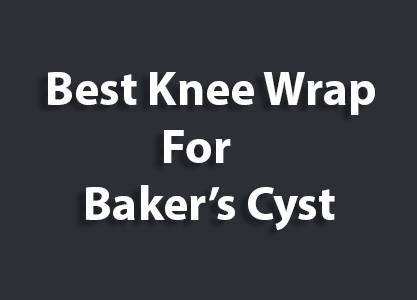How long after hip replacement can I tie my shoes?

Hip replacement surgery is a procedure where a damaged part of the hip is replaced by an artificial one made from metal, plastic, or ceramic. Hip replacement will give you a painless life with greater mobility. But you cannot move immediately after your hip replacement as you have already passed a major surgery. You have to wait patiently for your full recovery and then you will be able to make your movement. In this sense, a common question arises after how many days can a patient tie his shoes? This task will be a tricky one at that time depending on your type of surgery. There are two types of surgery – anterior approach and posterior approach.
Posterior (antero- lateral / hardinge) approach
In the posterior approach, patients have to wait for 6-8 weeks to tie shoes. Because it’s a traditional approach where muscles or tendons need to be cut and then reattach in the end. After the surgery, it takes time to repair the specific part of the hip. So, patients are told to take complete rest for 6-8 weeks. Bending is prohibited in this period. Patients should not fold their legs more than 60 to 90 degrees. So for the first 6-8 weeks, they shouldn’t tie shoelaces without proper healing. After 6-8 weeks when they are completely healed, they can tie shoes themselves without difficulty. However, precautions need to be taken in body movement and other activities like bending down, picking up things, crossing legs, sleeping position, driving, etc. Otherwise, it may cause further damage to their muscles and tendons.
Anterior approach
In the anterior approach, you can tie your shoe after 2-3 weeks of surgery. In this approach, there doesn’t need to cut any muscles or tendons. It’s a quick process where patients recover very soon. It ensures fast rehabilitation. Because there is no muscle or tendon recovery issue. So patients can move and do their activities after 2-3 weeks. Shoe tying also becomes easy after this certain time. But yet, it’s good to do any work carefully. Because sometimes patients may face some kind of numbness in their back. If this happens then It’s good to avoid such kind of work that requires bending issues.
Determine the shoe types
Choosing the right types of shoes will help your quick healing process. Select shoes with a flat or wide heel. If your shoe has heels then its length should not be more than 2 inches. You should avoid heels with spikes. Shoe must have shock absorption properties. And obviously, it should be comfortable, supportive, flexible, and lightweight. Don’t wear any shoes that will hinder your natural movements or make you feel uncomfortable. Select shoes that will offer you free movement with a natural walking pattern. Arch support is also important for maintaining proper balance. Proper arch support won’t make you feel pressure on your hip and will ensure your danger-free movement. The insole of your shoe should be a supportive one. Choose PU insoles or orthotic insoles for comfortable movement. So, select your shoes focusing on these features.
How to wear shoes with shoehorn and reacher?
You can use a shoehorn and reacher to wear shoes without bending.
Step 1: Loosely tie your shoelace before putting them on.
Step 2: Sit on a chair or bed. Hold the front side of the shoe with a reacher and the back with a long-handled shoehorn
Step 3: Then gently insert your leg into the shoe without bending.
How to wear shoes in traditional way?
All of the time you won’t get a shoehorn or racher. You also need to learn the traditional system of shoelace tying.
Step 1: Sit on a high position like a stool or chair where you don’t feel any stress on your back. Then hold your one leg and slowly put your leg on the other knee. Be careful you should not place your leg in such a position where one knee touches the other knee. Rather your desired leg’s ankle should be on the other knee.
Step 2: Then wear your socks and shoes like a normal person. Then slowly put down your leg holding your ankle with one hand and shin with another hand.
Alternatives of tying shoelace:
If you think tying shoelace yourself is problematic then here are some alternative ways-
- Use elastic shoelaces.
- Wear loafer.
- Wear slippers with a strong grip and good support.
- Seek help from friends or family members for tying a shoelace.
Exercise
As Movement is not frequent during this time, exercise can be an alternative option. Do some light body exercise for better blood flow and increased mobility. Maintain your body weight and regular diet. Weightlifting is completely prohibited this time. In This case, walking will be good exercise. In the beginning, you can use a walker to feel less pressure. Then try to walk yourself. Don’t walk too much at the beginning. It may dislocate your hip position
Walking Schedule
You can walk for half a mile a time for the first few weeks of surgery. You don’t need to walk for a long time. Spend 20-30 minutes for each round. You can repeat this 2 or 3 times a day. After several weeks of surgery when the healing process improves walk for 1 or two hours with a decent break. Patients can perform normal walking after 3-6 weeks of recovery
Conclusion
Activities after the hip replacement vary based on the types of surgery. The healing rate depends on the patient’s health conditions, age, lifestyle, etc. Don’t put excess stress on your body. Let your body rest for several weeks. Arrange your house in a way that will offer you comfortable and easy movement. Don’t compromise with maintaining personal hygiene. Otherwise, there will be a possibility of bacterial infection. Finally, do the routine checkup and consult with a physical therapist if necessary.

